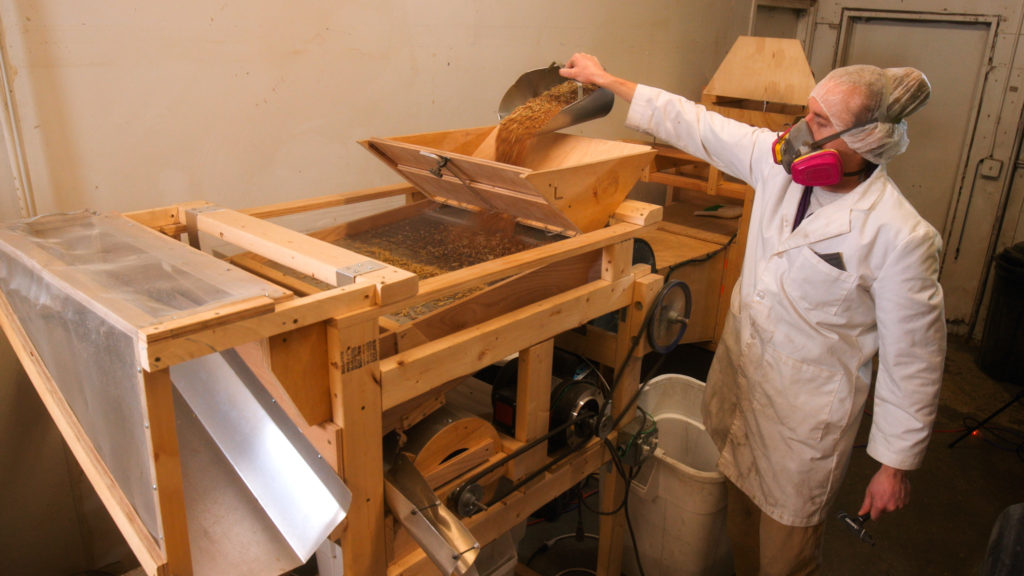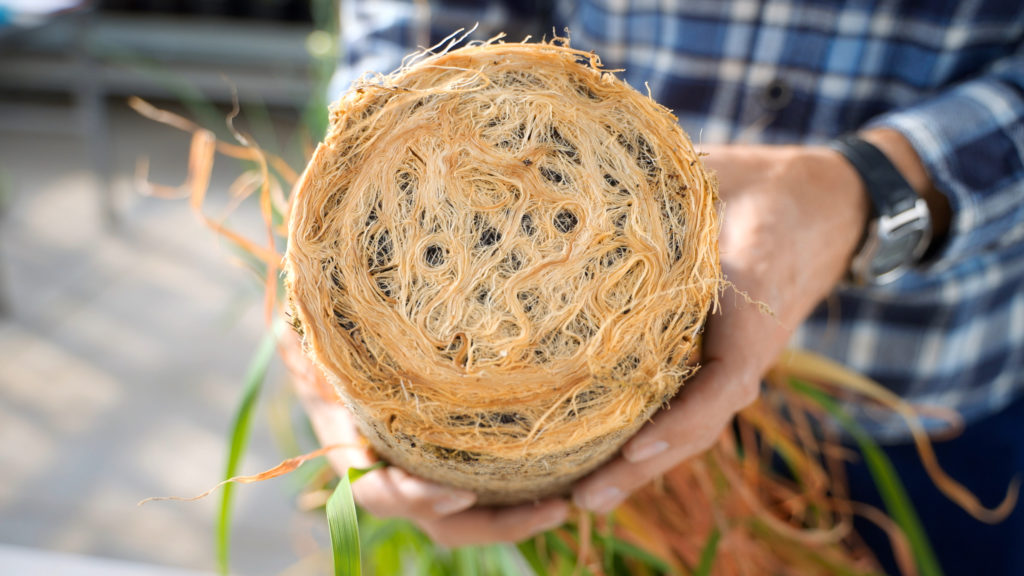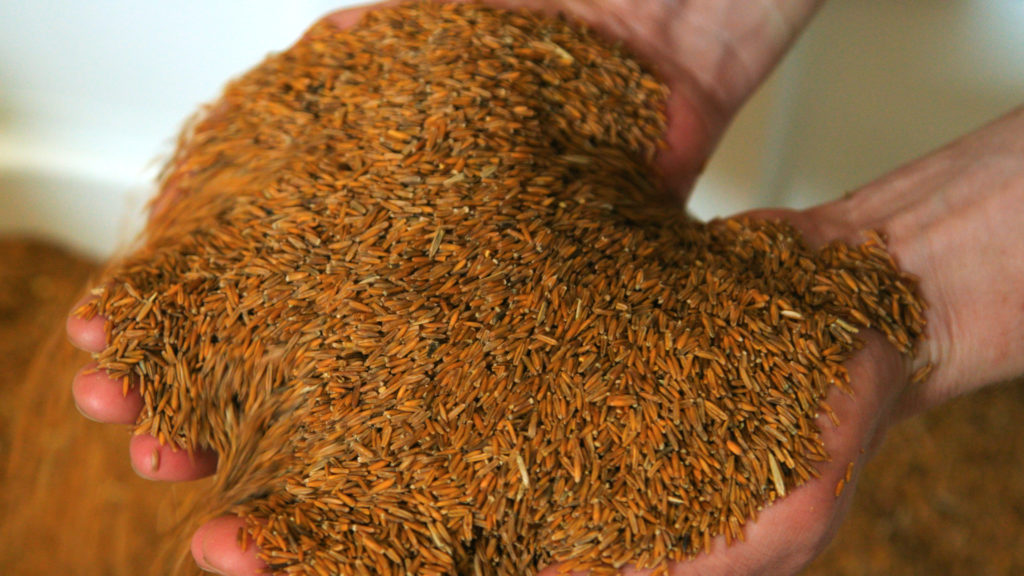Last updated on February 2nd, 2024
Kernza perennial grain has sparked the imaginations of many, from bakers to brewers, farmers to foodies, conservationists to climate activists. The fascination comes from Kernza’s holistic proposition: 10-foot-long plant roots help sequester carbon from the air and foster healthy soil and water. Perennial growth builds soil organic matter and promotes biodiversity above and below ground. And the grain has many tasty uses in food and beverages. Kernza’s rise points to a hopeful step-change for the future, rooted in inherently regenerative, climate-smart agriculture.
From Intermediate Wheatgrass to the Kernza® Perennial Grain
Kernza is the grain harvested from a perennial plant called intermediate wheatgrass. A distant cousin of annual wheat, Kernza can be used in baked goods, beer, and cereal and be cooked as a whole grain like rice or barley. The long-rooted prairie grass originates from an area of Eurasia between the Black and Caspian Seas, which is now the location of Turkey, Armenia, Russia, Georgia, and Azerbaijan. Brought to the US in the 1930s by USDA researchers, intermediate wheatgrass has been grown primarily for livestock forage and hay. Today, improved varieties of Kernza are growing on farms across the US and abroad and being sold as a small-scale niche grain crop.
Domestication of intermediate wheatgrass for grain production has taken nearly four decades and began in 1983 at the Rodale Institute in Pennsylvania. Researchers there were inspired and guided by the vision of a Kansas non-profit organization called The Land Institute and its co-founder Wes Jackson, who have worked to develop perennial grain cropping systems that mimic natural systems. Led by plant breeder Peggy Wagoner, researchers selected intermediate wheatgrass as a promising perennial grain candidate.
The research eventually transferred to The Land Institute in 2003, where Dr. Lee DeHaan selected the best plants based on their yield, seed size, disease resistance, and other traits to improve grain production. Then, in 2008, institute staff began experimenting with flour from the grain in their home kitchens and found that it tasted great. As a result, the trade name Kernza® was registered in 2009 to ensure quality oversight for the emerging perennial grain crop. A collaborative network of international researchers has since joined the effort with Kernza breeding programs at the University of Minnesota, University of Manitoba, and Utah State University.
Kernza Perennial Grain Goes to Market

Kernza perennial grain made its way into the commercial supply chain in small markets beginning in 2015. Since then, new varieties and growing methods have continued to be developed, enabling more farmers to plant Kernza and more producers to create products. Today about 4,000 acres of Kernza are grown by a network of farmers and researcher partners in 15 US states and 10 countries. Consumer access to Kernza products also continues to expand. First, a few intrepid restaurants and producers created products made with Kernza, like Patagonia Provisions’ Long-Root beers, General Mills’ Cascadian Farm Kernza cereals, and Minneapolis-based Birchwood Café’s baked goods. They were joined by additional regional restaurants, bakeries, distilleries, and breweries. Then in 2020, Christopher Abbott and the team at Perennial Pantry introduced a line of Kernza flour, whole grain kernels, and baking mixes that are now widely available to people across the US.
Making a Case for Perennial Grains as a Climate Solution
Perennial grains have already been identified as a climate change solution that could deliver mitigation and adaptation benefits, and perhaps the most compelling feature of Kernza is its potential as a climate solution. Soil carbon scientists are actively researching how much additional carbon Kernza perennial grain production can sequester.
Perennial grain crops hold unique and robust potential to help mitigate climate change by capturing significant amounts of carbon dioxide from the air and putting it back into the soil, while also efficiently using nitrogen within the soil, and thus reducing nitrous oxide emissions. Perennial grains do this by growing in place, setting down deep roots that remain undisturbed by plowing, building up soil carbon, and taking up nitrogen and water from deep in the soil, year-round.

Perennial grains may also provide a tool in adapting to climate change. If rains come less frequently but with greater intensity – as predicted in many regions of the world – deep-rooted perennial crops can direct more water into the soil, reducing runoff. The deep roots then utilize this stored water over time. Timely crop planting can spell the difference between a good versus a poor harvest for many farmers in semi-arid regions of the world. Because perennial grains regrow every year without replanting, farmers won’t have to depend so heavily on favorable timing of rains to get their crops started.
Finally, perennial grains could help reduce agriculture’s carbon footprint. In industrialized countries, perennial grain agriculture presents a pathway to help wean annual grain production from fossil fuels use. Over 99% of the energy farmers use to grow corn in the U.S. Midwest comes from fossil fuels. When farmland does not need to be plowed for planting every year, nutrients and water will be retained and used more efficiently. Weeds won’t need to be as intensively managed because well-established perennial grain crops will suppress them. As a result, there will be less “work” required to farm. In countries where grains are grown with human and animal labor, instead of fossil fuels, the reduced energy requirements to farm perennial grains should significantly reduce the labor required to produce a crop.
What’s Next for Kernza?

If current research progress is sustained, Kernza seed will be half the size of wheat seed by 2030. Breeders also continue to develop plants that are easier to grow, process, and harvest, with grain that has improved flavor and functionality. Although Kernza perennial grain currently has lower grain yields than annual wheat, farmers and consumers can benefit from the ecological impact of producing and consuming Kernza perennial grain today. The long-term goal is to have varieties with yields similar to wheat, resulting in Kernza grain that can be produced at a significant scale.
In addition to yield improvement, ecologists are working to develop intercropping systems where Kernza is grown alongside legumes, like alfalfa or clover. Kernza legume intercrops hold promise to enhance carbon sequestration and reduce nitrous oxide emissions even further. Kernza perennial grain will have the most extensive ecological impact when it is grown on millions of acres globally and is an everyday staple on grocery store shelves. This has positive consequences for climate change mitigation and adaptation and for the future of food.

